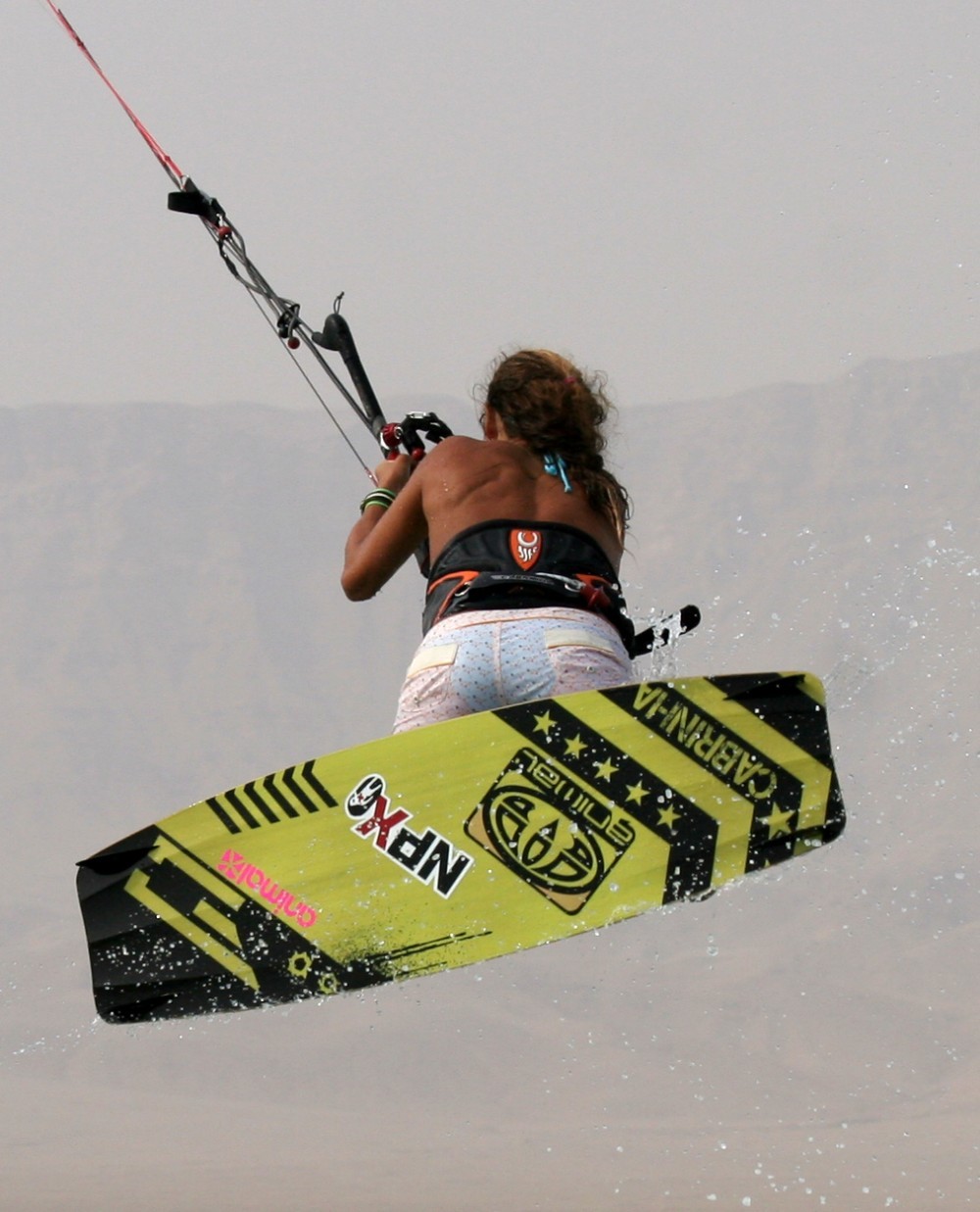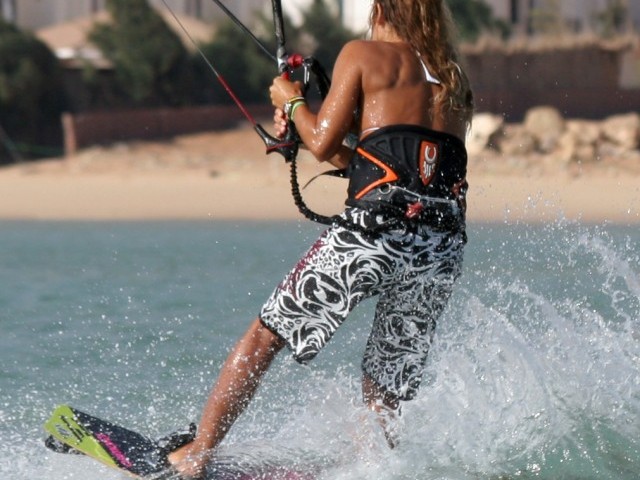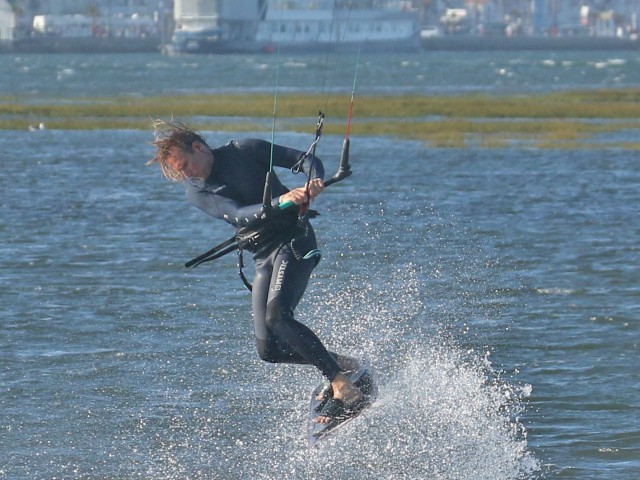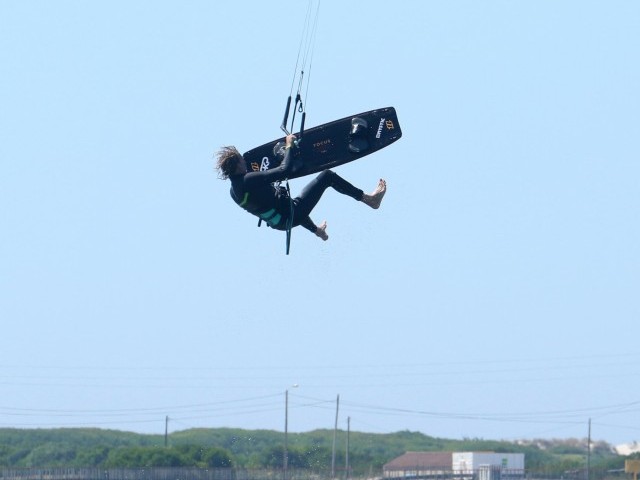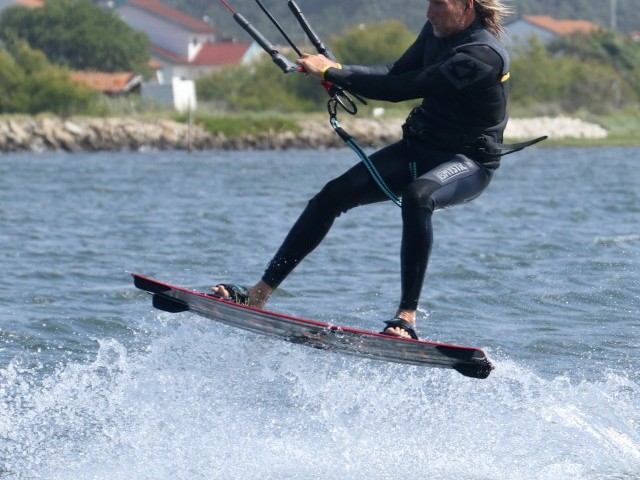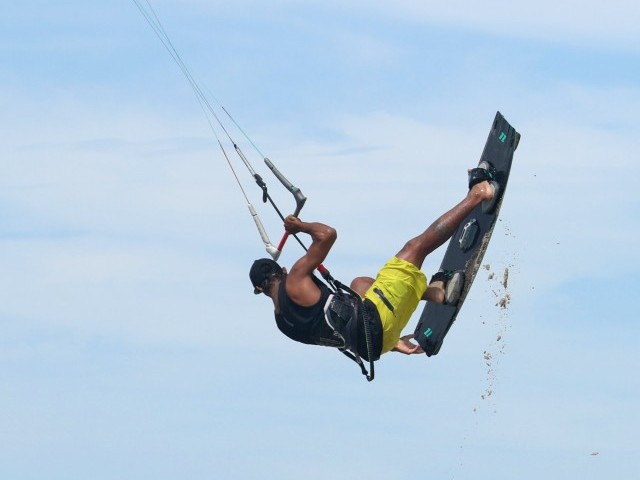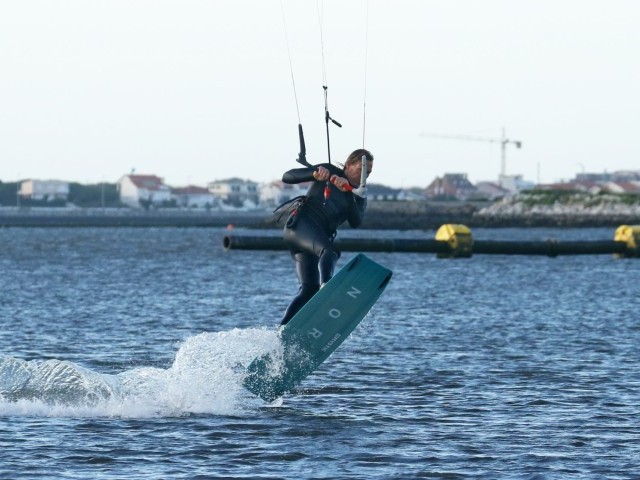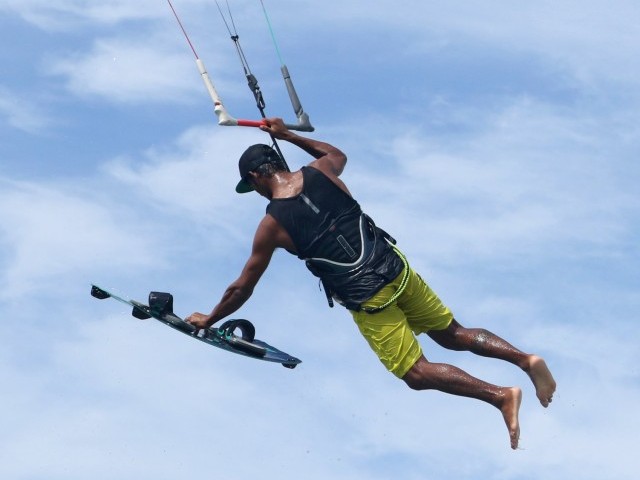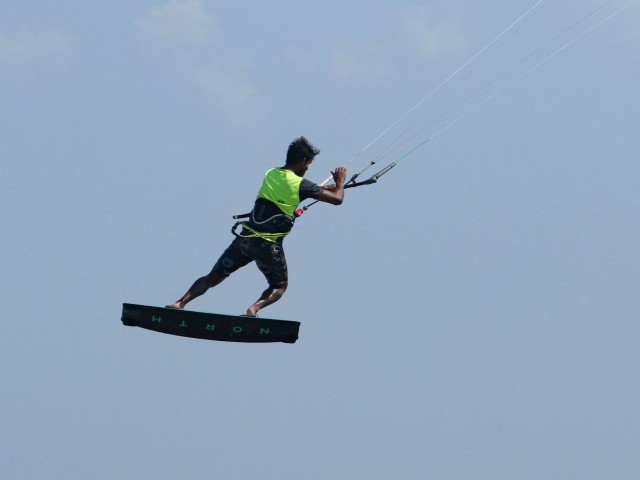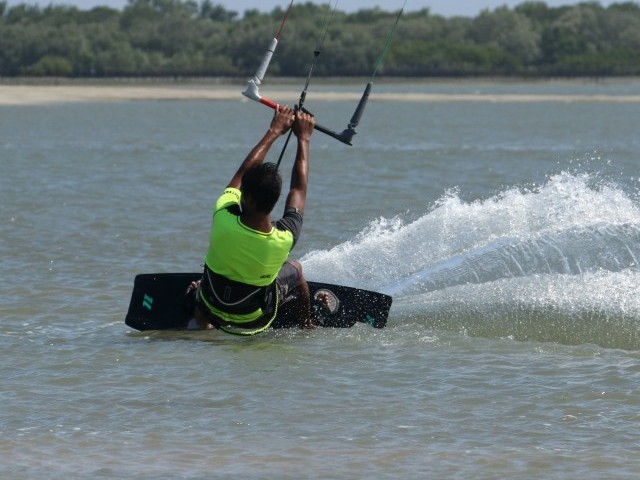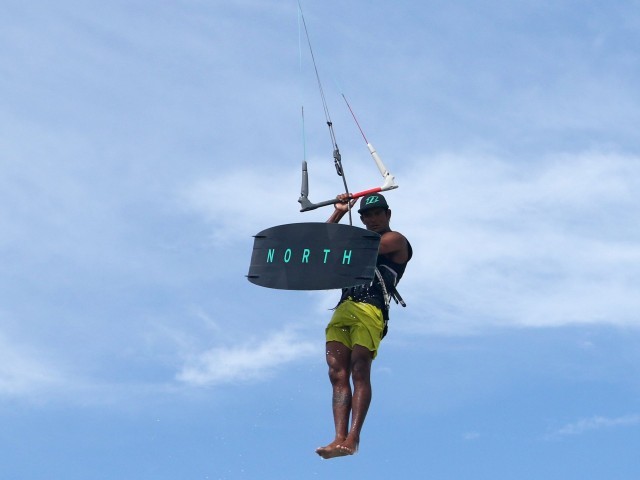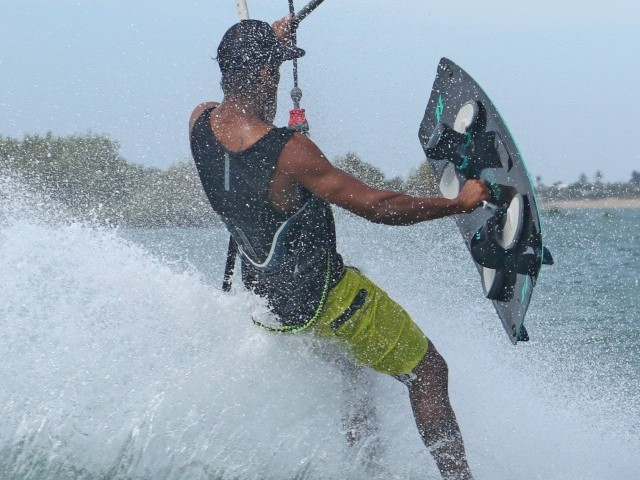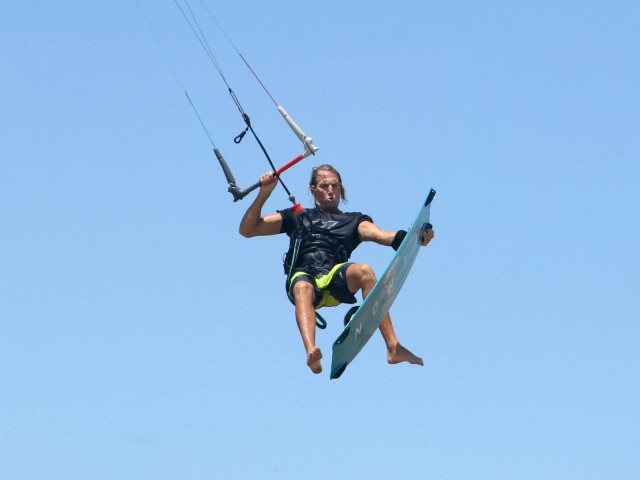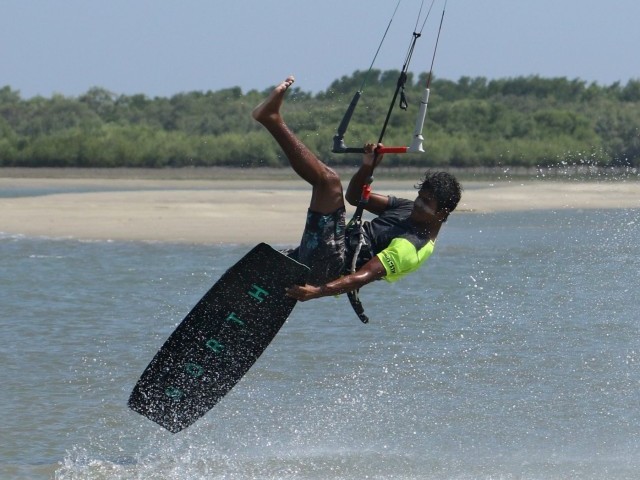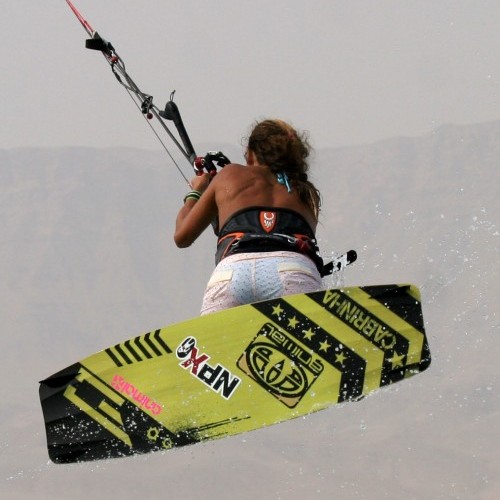
Unhooked Down Loop
Technique / Advanced
Introduction
The unhooked downloop is a satisfying morsel that unfortunately doesn’t get enough airtime these days. Some time ago you would have seen the editor of this very publication throwing these down left, right and centre. If you’re not sure what it is have a look at sequence 1.
When it’s at home this move is a pop performed whilst the kite loops in a forward direction, which inevitably will pull you forward into a raley position, which not only looks good but feels startlingly brilliant too. As the pull from the kite comes from in front of you it isn’t too aggressive, and it is another unhooked move that can easily be performed when the water is somewhat agitated. Finally it is the precursor for a downloop s-bend.
All in the Timing
The basics of this move are not beyond anyone who can happily raley unhooked, as half the secret lies in the pop up off the water. However there are a fair few ingredients in the pot. All fairly straight forward in themselves, but all complicated by the fact that they all need to be done well, in quick succession, in the blink of an eye. So understanding each part as well as how it should seamlessly fit with the next is vital.
In pure timing terms you need to be popping early. You should be able to pop from the speed that you take into the move. This way you don’t need to let the kite loop to give you the power to pop. The result of this is that you’ll be going up as the kite starts to go around, meaning that you’ll get more height and land as the kite finishes its loop. The longer you wait the lower the kite will have turned and the lower you’ll fly. This will also end up with the kite starting another rotation before you land.
Unhooking a High Kite
Your first concern is the position of your kite. Ideally you’ll have your kite pretty much at 12 o’clock to start this move. That’s all fair enough, but you need to unhook too. This means that your approach needs to work for you. With your kite high the problems of slowing down and not being able to unhook are lurking in the wings. On your approach you’ll need to drift the kite up whilst edging hard and then at the very last minute bear away loads to slacken the lines off and unhook. Once again your body position for unhooking is crucial, so make sure that you push your hips up and shoulders back, otherwise the chicken loop won’t slip out easily. Not wanting to state the obvious, but here goes – make sure you trim your bar down. If you leave the bar trimmed too far out it’ll be even harder to unhook.
Handy Work
Next you need to get your hands sorted. In Pic A. you can see how Karine has released her back hand and then reaches forward and grabs the bar just underneath her front hand in a fish-pole grip. There is no relevance to whether you are right or left handed, the importance is that the front hand stays butted up against the centre line and the released back hand grabs a close to it as possible. If you’ve just lathered up with some factor 50 this could prove a tad tricky. This slick movement to one side of the bar will get the kite turning sharpish into a downloop.
The Pop
No doubt you’re well aware by now of the need for a decent edge to pop off. Here is no exception. If you enter with the correct body position it will be easy enough to get onto your edge quickly. Looking again at Pic A. you can see that Karine has her shoulders back and hips forward. Even more importantly she has her front leg extended, so her hips are over her back foot and she has twisted her hips and shoulders around to aim upwind. This allows her to drop her bum low to the water and get into a solid carving position in double quick time (if your raleys aren’t brilliant this could well be the missing ingredient).
You can also glean from this picture how Karine has already started to drop into her carve as she releases her back hand. Multi tasking at its best. Only by doing this will she be ready to pop off her edge before the kite gets too far into its downloop. To pop Karine will explode up off her back leg by suddenly straightening it, kicking down onto the heel of her back foot.
You can see the rapid chain of events involved in the approach to the downloop. Coming in with speed Karine bears away, unhooks, changes hands and carves. All in a split second!
Entertaining Air
Once you pop up into the air your objective is to follow the pull of the kite. By doing this you will keep you balance and be ready for the landing. The simplest way to go with the kite’s pull is to watch it. In Pic B. you can see Karine being pulled through the air by her downlooping kite. Her head is in line with the bar, which is pointing at the kite. In a powered downloop your feet might flick up and slightly behind you. So long as you look at the kite this won’t twist you. Also by looking up at the kite, Karine’s head is lifted. This will make it easier for her feet and board to drop underneath her. If you feel the need to take a hand off for balance it must be your back hand.
Touch Down
As we just mentioned keeping your head up, allows you body to fall into a more normal vertical position. Just the same way a lifted head stops would be swimmers from lying flat on the water. If you can keep your arms, or front arm bent, the pull will bring your leading hip forward and set you up for a pleasant downwind landing. Try and land with your weight over the board, that is to say, your hips and shoulders above the board and not leaning to one side or other. In Pic C. Karine is upright over her board. This gives her the option of going either way depending on where the kite is going.
When you first land a downloop follow the kite downwind, watching it loop again. As you see it turn through the bottom of its rotation and start to come up, grab the back of the bar with the hand you swapped over. If you don’t get the timing right just grab the chicken loop and let go of the bar. At least the kite will flutter up and you can sort yourself out.
Dress Rehearsal
When you go out to try this for real remember that you will be travelling downwind with a looping kite, potentially both in the air and on the water, so you’ll need a lot of room. It won’t do anything for your confidence, reputation or bank balance if you wrap your kite around someone or something. Also you may need to let go, so make sure your leash is strong enough and will depower the kite.
Following Sequence 2
- Pic 1. Karine approaches with her kite around 11 o’clock. She starts to drift the kite up and bears away suddenly by allowing herself to be pulled up over the board, flattening it and pushing her front foot towards the kite and leaning her weight over her back foot.
- Pic 2. Karine forces her hips forward and up as she pulls down with both hands.
- Pic 3. As Karine pushes her bar away and the chicken loop out she already starts to drop her bum and shoulders away from the kite. She looks where she is going, not up at the kite.
- Pic 4. She swaps hands and starts to get back on her edge by driving her feet away from her.
- Pics 5 & 6. Karine twists her hips and shoulders to face more upwind, forcing the board to carve hard onto its edge. The kite is starting to steer down and will pull soon.
- Pic 7. Karine pops up hard off her edge extending her back leg.
Following Sequence 3
- Pic 1. As Karine pops up the kite pulls her forward now that she offers no resistance.
- Pics 2 & 3. Karine looks towards the kite to keep herself balanced.
- Pic 4. As the kite starts to rise again, it stops pulling and Karine starts to drop down. She keeps the bar pulled in with bent elbows, which turns her naturally to follow the kite.
- Pic 5. With her head up Karine lets her feet and the board drop under her. She releases her back hand for some added balance.
- Pic 6. Karine lands over the board, waits for the kite to rise, and then gets her other hand back on the bar.
Common Problems
Not getting in the air is the most frustrating error and is due to waiting for the kite to pull, to pop against. Unfortunately the kite will win, pulling your shoulders forward over the board, so you have no chance of getting back onto your edge, as you follow the kite. This is clearly demonstrated in Sequence 4.
The solution is you must go early. At first you’ll find this a real rush, so make sure you get the kite all the way to 12 o’clock as this will give you more time. Then try and pop as soon as you have changed your hands – don’t wait for the pull.
If you find that you are taking off, but not really getting any height, the likelihood is that you have the kite too low to start with. Do in your approach make sure the kite drifts up high.
Keystones
- Kite at 12
- Unhook with shoulders back and hips forward
- Change hands
- Carve and pop early
- Follow kite once in air
This technique article was in Issue 18 of IKSURFMAG.
Related
By Christian and Karine
Christian and Karine have been working together as a coaching team, running improver to advanced kitesurfing clinics since 2003.












